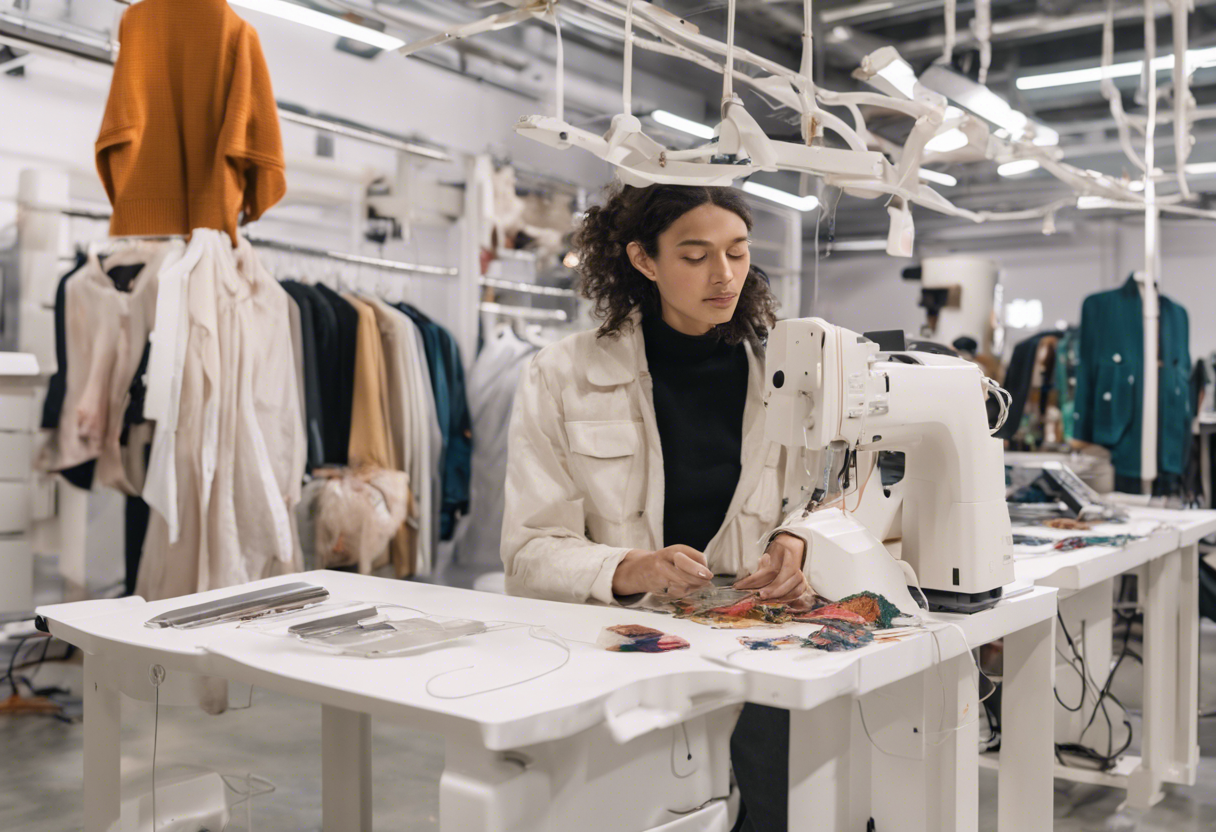Top 8 tech innovations in sustainable fashion

Revolutionizing the Runway: Top 8 Tech Innovations in Sustainable Fashion
The fashion industry has long been critisized for its enviornmental and social impact. From fast fashion's contributing to landfill waste and polution to the explotation of workers in the supply chain, the industry's darker side has sparked a growing awarness of the need for change. Fortunately, technology has emerged as a powreful ally in the quest for sustainable fashion. From innovative materials to cutting-edge manufacturing processes, tech is revolutionizing the fashion industry, making it more enviromentally friendly, socially responsable, and – most importantly – sustainable. Here are the top 8 tech innovations transforming the fashion landscape.
Digital Pattern Making and 3D Design
One of the most significant contributors to fashion's enviornmental footprint is waste generated during the design and production process. Traditional pattern making involves creating physical prototypes, which often results in excess fabric and energy consumption. Digital pattern making and 3D design have changed the game by allowing designers to create and test designs virtually, reducing waste and energy usage by up to 90%. Companies like Browzwear and Optitex are leading the charge, providing software solutions that enable designers to create precise, data-driven designs that can be easily adapted for production.
Sustainable Materials and Production
The fashion industry is notorious for its reliance on synthetic materials like polyester and nylon, which contribute to microplastic polution and are non-biodegradable. In response, companies like Patagonia and Reformation are turning to innovative, eco-friendly materials like Piñatex, a non-woven textile made from pineapple leaf fibers. Meanwhile, startups like Mushroom Mountain and Bolt Threads are pioneering the use of mycelium (mushroom roots) and spider silk-inspired fibers in their designs. These sustainable materials not only reduce waste but also promote a healther enviornment.
Circular Business Models and Rentability
The rise of fast fashion has led to a culture of disposability, where clothes are worn once and discarded. Circular business models aim to reverse this trend by promoting the sharing, renting, and recycling of garments. Companies like Rent the Runway and ThredUp are revolutionizing the way we consume fashion by offering affordable, high-quality rental options and second-hand shopping platforms. Meanwhile, startups like Hurr and The RealReal are creating peer-to-peer rental marketplaces that encourage users to share their existing wardrobe and reduce waste.
Artificial Intelligence and Supply Chain Optimization
Artificial intelligence (AI) is transforming the fashion supply chain, enabling brands to streamline production, reduce waste, and improve labor practices. Companies like Stella McCartney and H&M are using AI-powered platforms to analyze consumer behavior, optimize inventory, and reduce waste. AI also helps brands identify and address labor violations in their supply chains, ensuring fair labor practices and improved working conditions.
Virtual and Augmented Reality in Fashion
Virtual and augmented reality (VR/AR) are revolutionizing the fashion experience, enabling customers to try on clothes virtually and interact with brands in immersive, 3D enviornments. Companies like Gucci and Louis Vuitton are using VR/AR to create interactive campaigns, while startups like Fitnect and Mavatar are developing virtual try-on solutions that reduce the need for physical samples and returns.
Blockchain for Transparency and Authenticity
Blockchain technology is helping to promote transparency and authenticity in the fashion industry, enabling brands to track the origin, production, and distribution of their products. Companies like Martine Jarlgaard and Mother of Pearl are using blockchain to create transparent, end-to-end supply chains that ensure fair labor practices and reduce counterfeiting.
Second-Hand and Upcycling Platforms
Online marketplaces like Depop, eBay, and Poshmark have popularized second-hand shopping, reducing waste and promoting the reuse and recycling of existing garments. Meanwhile, startups like ThredUp's Goody Box and The RealReal's Trade-In program are making it easier for consumers to trade in their used clothes for credit or cash. Upcycling platforms like Patagonia's Worn Wear and The North Face's Clothes The Loop encourage consumers to repair, repurpose, and recycle their used gear, reducing waste and promoting sustainable consumption.
Advanced Recycling Technologies
Advanced recycling technologies are enabling the fashion industry to recycle and repurpose materials that were previously considered waste. Companies like H&M's Garment Collecting Initiative and Patagonia's Worn Wear program are partnering with recycling startups like I:CO and Higg Co to develop closed-loop recycling systems that can transform old clothes into new fabrics. This innovation has the potential to significantly reduce waste, conserve resources, and promote a truly circular economy.
Conclusion
The fashion industry's enviornmental and social impact is a pressing concern that requires urgent attention. Fortunately, technology has emerged as a powreful ally in the quest for sustainable fashion. From digital pattern making and sustainable materials to circular business models and advanced recycling technologies, the innovations highlighted above are revolutionizing the fashion industry, making it more enviromentally friendly, socially responsable, and – most importantly – sustainable. As consumers, we have the power to drive change by supporting brands that prioritize sustainability and adopting more conscious consumption habits. Together, we can create a fashion industry that not only looks good but does good too.